Established in July 1851, the organisation that became the Port Adelaide Institute served as a library and centre for social and cultural activities within the Port for over a century. It also functioned as an educational venue for working class adults who were unable to pay for formal education at preparatory schools and colleges. From humble origins as a ‘Mechanics’ Institute’ in a hotel meeting room, the Port Adelaide Institute ultimately occupied its own specially-built premises, boasted substantial membership, and housed an expansive collection of nautical art, objects and ephemera that formed the nucleus of today’s South Australian Maritime Museum.
Origins
The Port Adelaide Institute was one of a number of institutes founded in South Australia during the second half of the nineteenth century, and had its roots in the ‘model society’ aspirations of the colony’s founders. Anticipating that both colonists and Indigenous populations they encountered might want access to a system of education as a means of self-improvement, the South Australian Literary and Scientific Association assembled a library of 117 books and shipped them to Port Adelaide aboard the vessel Tam O’ Shanter. The collection was subsequently transported overland to Adelaide, where it became the foundation of the South Australian Institute library and—much later—the State Library of South Australia.
These books, as well as an assortment of other Adelaide-based educational, professional, commercial and medical facilities, were ostensibly available to the citizens of Port Adelaide. However, a combination of high transport costs and Port Road’s overall poor condition meant that few Port residents were able to share amenities enjoyed by their Adelaide-based peers. Confronted with this reality, they moved to create their own facilities instead.
The Port Adelaide Mechanics’ Institute
A public meeting held at Port Adelaide’s courthouse on 26 May 1851 culminated in the decision to found a Port-based library and Mechanics’ Institute. George Coppin, the proprietor of the White Horse Cellars hotel, offered free use of one of his establishment’s meeting rooms and associated library, and generous monetary donations were made by notable Port residents Captain John Hart and South Australian Company manager William Giles. Under the direction of Captain Thomas Lipson, a steering committee established the Port Adelaide Mechanics’ Institute within two months, and it held its first meeting at Coppin’s hotel at the end of July 1851.
Dr. Edward Davy was elected the Institute’s first President and plans were quickly set in motion to acquire property and construct a library and meeting hall on the site. Captain Hart, acting in his capacity as Vice-President, lobbied his business partners to donate a parcel of land that would be transferred to the Institute’s ownership once enough money had been raised to erect the building. However, aspirations for the organisation’s success rapidly evaporated the following year as the Victorian gold rush reached its apex. By March 1852, nearly one-third of all adult males in South Australia had caught ‘gold fever’ and departed for Melbourne, along with approximately two-thirds of the colony’s circulating currency. The resulting labour and money shortage was catastrophic for South Australia’s economy, which nearly slid into bankruptcy. It also brought a sharp decline in support for public education and the Port Adelaide Mechanics’ Institute, which closed its doors by the middle of the year.
Mechanics’ Institute Redux
In 1854, a handful of Port Adelaide residents set in motion plans to re-establish a public library within the town’s limits. Coppin had departed the Port in the intervening years and taken his library with him, so the new committee undertook efforts to build a new literary collection. An assortment of books, newspapers and periodicals were acquired from local sources, and several new books purchased from England. These were housed in a small wooden shed that the reconstituted Port Adelaide Mechanics’ Institute leased from merchant Walter Smith. The shed was located within Smith’s timber yard on the corner of Nile and Mildred Streets, and was a short distance from Town Hall.
Despite the best efforts of the committee, funding for the Institute again failed to materialise and the decision was made to abandon the initiative a second time. A major contributor to the Institute’s failure was the cost of membership: patrons were required to pay an annual subscription of ten shillings (to use a library that contained very few books). In the wake of the Institute’s closure, the collection of reading material was forfeited to Walter Smith to compensate him for rent payments in arrears. Smith appears to have kept the library together and continued to store it in the shed until both were destroyed during Port Adelaide’s second ‘Great Fire’ in November 1857.
The Port Adelaide Institute
Two years passed before a third attempt was made at creating a Port Adelaide-based educational venue and library. This time, the manager of the Port Adelaide branch of the Savings Bank of South Australia, A.W. Gliddon, rallied support from prominent Port residents and persuaded 100 local people to pay a £1 annual membership to the new organisation—re-branded the ‘Port Adelaide Institute’. In an odd twist of fate, the Institute’s first meeting on 10 October 1859 was held in the same White Horse Cellars hotel where the inaugural gathering of the Port Adelaide Mechanics’ Institute had taken place nearly a decade before. The event was well attended, and within twelve months the Institute’s membership expanded exponentially. During the same period, the library’s collection of books was augmented by 350 new volumes.
As had occurred on past occasions, the Institute initially lacked a purpose-built space in which to house its library and host lectures and other educational programs. Despite promises from the colonial government that it would allow the Institute to take up residence in the old Customs House, this never occurred. In 1863, the government suggested another of its North Parade-based buildings, but reneged on the offer within a year. The Institute was forced to move a few more times before taking up residence in the vacant Telegraph Office on the corner of North Parade and Commercial Road in 1868. On account of its location and itinerant history, the organisation suffered a drastic reduction in membership that detrimentally affected its income. By 1870 the Institute was £50 in debt and its enrolment had dropped to 35 members.
Just when it appeared the Port Adelaide Institute would close for a third time, several local businessmen persuaded the committee to reduce the cost of annual subscription to twelve shillings. Doing so made the Institute accessible to a significantly greater percentage of the Port’s population, and within two years membership climbed to a record 230 individuals. The group of businessmen, led by Carron Iron Works owner Robert Lindsay, also persuaded Port Adelaide politician David Bower to donate £500 to the construction of a new Institute building. Bower agreed, but attached conditions to his contribution. The most significant of these was that the Institute provide free education for adults and children until the colonial government established free schools for the working class. Port Adelaide’s citizens rallied around the cause. They raised funds to match Bower’s contribution and successfully persuaded the occupant of the government-owned No. 4 Bonded Store at the corner of Commercial Road and Nile Street to forego his lease and make way for the Institute.
The foundation stone of the new Port Adelaide Institute building was laid on 31 October 1874, and construction commenced shortly thereafter. South Australia’s Colonial Architect, Robert George Thomas, won a competition for the most suitable design and commenced transforming his idea(s) into reality. A lack of funding threatened to derail construction, but the shortfall was made up through the efforts of David Bower. Builder Cleave and Williams erected the new building at a cost of £4500. The Institute officially opened on 23 October 1876 and featured a library, reading room, museum, lecture hall and classrooms, as well as offices for the lecturer(s), curator(s) and committee members. It was designed in the Victorian Italianate style and constructed of stone sourced from both Tea Tree Gully and Dry Creek. Because the building was constructed on reclaimed land, its footings were formed from a red gum timber raft embedded in lime concrete. The dressings were formed from Portland cement, and the entrance was adorned with Freestone fluted columns and bases. Urns were originally positioned over the corner entrances to the building, but subsequently removed.
Within a very short time, the Institute accumulated a vast number of books, as well as a diverse array of art, artefacts, and ephemera from Australia and abroad. By the beginning of the twentieth century, the Port Adelaide Institute was among the largest institutes in South Australia (second only to the South Australian Institute in Adelaide). It boasted satellite branches in Semaphore and Henley Beach, distribution outlets at Hog Bay and Queenscliffe on Kangaroo Island, and a library featuring over 18 000 volumes. The combined value of the Institute building and its various collections totalled more than £18 500. In addition to a variety of adult education courses (which included topics as diverse as geometry and nursing), the Institute promoted innovative child education schemes, including one of the first children’s libraries in Australia.
Despite all it offered, the Institute’s membership did not increase to match the significant growth in Port Adelaide’s population in the twenty-year period leading up to 1900. While some have argued that stagnancy in the organisation’s enrolment was the result it having become a ‘refuge for the intellectual snobs of Port Adelaide’, the cost of subscription once again appears to have been the primary culprit. Following a reduction in fees, new members swelled the Institute’s ranks and enrolment totalled nearly 1200 individuals by August 1914.
The Port Adelaide Nautical Museum
The museum and art gallery housed within the Port Adelaide Institute was a source of pride for its committee and members; however, as the size of the collections increased through donations and acquisitions, there was a corresponding decrease in the space available to display them. By 1921, the situation had become so dire that the Institute committee refused to accept donations that were not of a ‘definite scientific or educational nature’. A decade later, the museum space was so cluttered and confined that the committee ordered it locked to prevent patrons from damaging objects (or injuring themselves). Those wishing to view the museum’s displays could only do so after lodging a formal request for a chaperoned visit.
In 1932, the Institute committee decided to change the museum’s focus to Port Adelaide and South Australia’s maritime history and heritage. Items in the collection that did not emphasise these specific areas of interest were transferred to the South Australian Museum. Institute committee member Vernon Spottiswoode Smith took on the herculean task of sorting through the vast array of material housed by the museum, discarding irrelevant items, and acquiring artefacts and memorabilia of local or nautical interest. The collection Smith created was known as the Port Adelaide Nautical Museum, and was the first of its kind in Australia. The Nautical Museum’s assemblage of objects ranged from ship’s biscuit to figureheads, and formed the nucleus of what later became the South Australian Maritime Museum.
Final Years
Following a decline in membership during the Great Depression, the Port Adelaide Institute underwent a brief renaissance after the outbreak of the Second World War. This was due in large part to increased numbers of military personnel and civilians living and working in the Port as part of the war effort. It may also have stemmed from the reassuring presence of an air raid shelter—the walls of which were lined with stacks of old books—in the Institute’s basement. In the immediate post-war years, however, use of the Institute once again contracted, and by 1959 only the library and Nautical Museum continued to operate regularly. At the same time, movements to introduce a ‘free library system’ throughout South Australia and the nation as a whole placed pressure on the Institute committee to rethink its long-standing policy against free membership.
As it was pondering these issues, the committee received a request from the Customs Department to purchase the Institute building. The Customs House, which was located immediately adjacent to the back of the Institute, was then in the process of expanding its operations and needed additional space. Shortly after receiving the request, the committee and membership voted to sell the building, arranged for the construction of a new facility on St. Vincent Street, and agreed to transform the Institute into a free municipal library. In preparation for the move, the organisation’s vast collections were inspected and sorted. Desirable items were restored and/or packed for transfer to the new Institute building, while others were either discarded or transferred to other repositories (such as the South Australian Museum or University of Adelaide Library). In July 1959, the Institute moved to the St. Vincent Street premises, and the Port Adelaide Nautical Museum took up residence on its top floor.
By the mid-1960s, the Port Adelaide Institute was one of only a handful of surviving institutes in South Australia, but its existence was tenuous at best. Although enrolment hovered around 1200 individuals, the committee refused to increase subscription rates for fear it would lead to a mass membership exodus. While the Institute was able to function on subsidies provided by the Port Adelaide Council and State government, not enough money was available for routine building maintenance and acquisition of new books. In an effort to cut costs, the Semaphore branch was closed in 1974. Three years later, the committee voted to transfer the Institute and its collections to the City of Port Adelaide under the proviso that it would re-open as a government-funded free public library. The Port Adelaide Institute shut its doors for the last time on 8 January 1979, and with its closure the Port Adelaide Public Library was established.


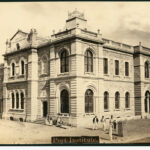

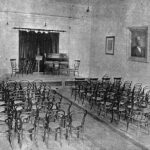
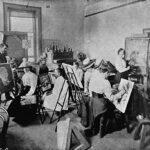
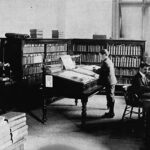
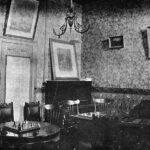
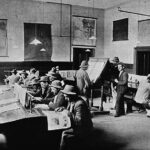
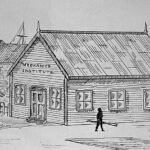
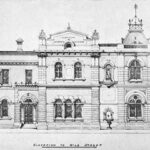
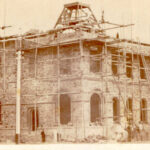
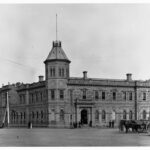
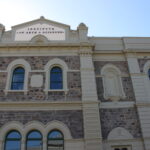
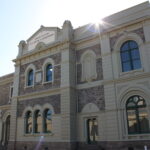
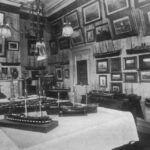
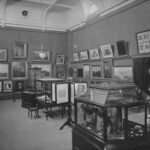
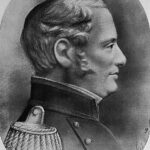
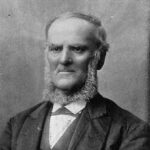
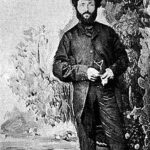
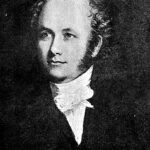

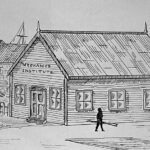
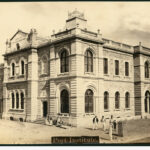
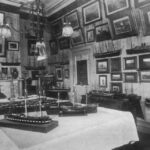
Comments
9 responses to “Port Adelaide Institute”
Robert Lindsay, owner of the Carron Iron Works, was very active in education and public affairs in Port Adelaide during his life.
According to his obituary, he was born in Dennyloan head, Stirlingshire, Scotland in 1828 and learned the iron trade in Glasgow and came to South Australia via America and the Victorian goldfields. He was a councillor for the Portland Ward for many years and was one employer to recognize the 8 hour working day. His son John Alexander Maxwell Lindsay became the first Chief Engineer of BHP Co Ltd.
Thanks for sharing that Andrew, it’s a fascinating part of our history.
My Great Grandfather was in the Institute for some 60 years.
I don’t know his first name but I believe his surname was Meleng. Can you assist me in discovering information about my Great grandfather.
Regards John A Colegate
Hi John, unfortunately we don’t have a lot of information on those who were in the Institute in our collection. I’ll double check with the South Australian Maritime Museum staff to see if they can unearth anything, but your best bet is probably looking at State Records http://www.archives.sa.gov.au/ or the local history collection at the City of Port Adelaide Enfield https://www.portenf.sa.gov.au/page.aspx?u=328
My GG uncle David Bower donated most off the funds to build this institute. He provided the first 50% and due to donations falling short , paid for the rest of the building cost.
Thanks for adding that information Ian,
Sounds like an amazing man your great, great uncle.
Some of the comments here need a bit more investigation.
My interest,apart from the history aspects is that I was the first chairman of the Library Committee of the Port Adelaide Council and pushed for the preservation of the remaining treasures as a reference library with limited access in the new library buildingg constructed by the Council. When out of council ! Acquired the now long vacant building on St Vincent Street to remove all the cedar shelving which had been relocated from the original institute and in the process, disfigured by being ‘painted’ with a green tinged product called Estapol Antique which had been popular then. This shelving has been restored and is now in my library at home. The building I re sold and it is now being repurposed as residential apartments.
I later bought the original institute and still own it now. David Bower was a major benefactor but he did not donate half the money nor did he pay it off. The cost was just north of four thousand pounds and the history of the first 100 years of the Port Adelaide Institute written by the then librarian F. E.Meleng referred to in the comments, makes plain the initial contribution made by Bower, and the contributions collected from the community and I think also the way the balance was financed. In his will Bower donated an additional one hundred pounds for the construction of theDavid Bower lecture theatre which was added to the original building in Nile Street to the west. This does not have four walls as the original west wall forms the fourth which has caused some settlement problems.
Meleng’s book is a treasure trove on early Port Adelaide people which also shows that at that time the Carron Iron Works was owned by Thomas Playfair
The title of Meleng’s book is ‘Fifty Years of the Port Adelaide Institute with Supplementary Catalogue’
I should not have said 100 which is clearly wrong.
Another couple of points of interest.
I have always heard the institution referred to as The Mechanics Institute (mechanic then was about the same as we use the term technician) or simply the Institute. But while renovating the facades a few years ago, I had the painters strip the Nile Street gable as there was evidence of a painted sign beneath. This sign was original as it had been chased into the original render and showed that it was intended to be called the ‘Institute of Arts and Sciences’
That sign has now been repainted.
When the building was taken over by Customs the foundation stone was desecrated by being roughly chipped and rendered over. I recall a story of its rediscovery by Brian Samuels long ago. During the aforementioned work I arranged for the inscription to be reproduced on marble veneer which I had installed in the recesses of the quoin so there is a gap between the original stone and the plaques of about 10 mm but the foundation stone now appears larger.
I thought this memorial to David Bower’s benefaction deserverved to look respectable again and it was only after the installation that I became aware that the replacement was 140 years after the original placement to the month with the original date being the 31st October and the replacement on the 6th.